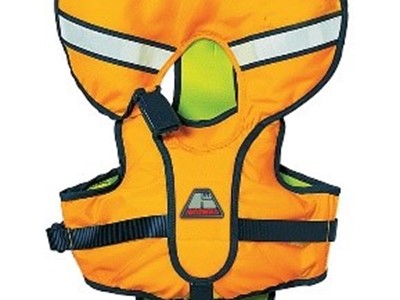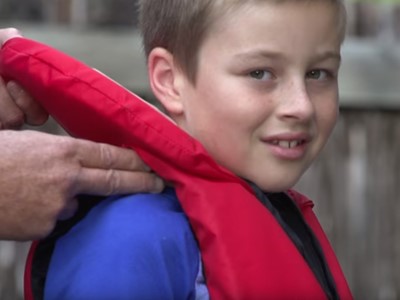Like wearing a seatbelt in a moving car, wearing a lifejacket is a no-brainer when you're out on the water. But wearing one that is damaged is a false sense of security - it might not help you when you need it.
The first thing to remember is that a lifejacket won't last forever. Like anything exposed to salt water, sooner or later it'll need replacing. The good thing is that you can extend the life of your lifejacket with these simple checks.
Foam lifejackets
- Check for rips or tears in the outer fabric.
- Check the buckles and webbing. If the buckles are damaged, you might slip out of your lifejacket when you're in the water. Replace any damaged buckles.
- UV damage. Any major fading or brittle fabric is not good news, and means you should replace your lifejacket.
- How heavy is it? A normal foam lifejacket is fairly light, weighing just a few kilos. If your lifejacket feels heavy compared to other ones (like a wet, heavy coat) it might mean the foam inside is waterlogged - meaning it won't provide any buoyancy when you need it.
- How old is it? Properly cared for, a lifejacket will last at least five years. If your lifejacket is over ten years old, it might be made of obsolete materials like kapok, which can get badly waterlogged. Get rid of it - what's a hundred dollars, compared to your life?
- The right size. Here's one for those of you with kids - if the lifejacket is too small for your young'un (for example, you can't do the buckles up) it's time to upgrade. Don't be tempted to buy a lifejacket for your child to grow into though; if they fall in the water, a bigger lifejacket will ride right up over their head. Children's lifejackets should also have crotch straps to ensure they don't ride up if they end up in the water.
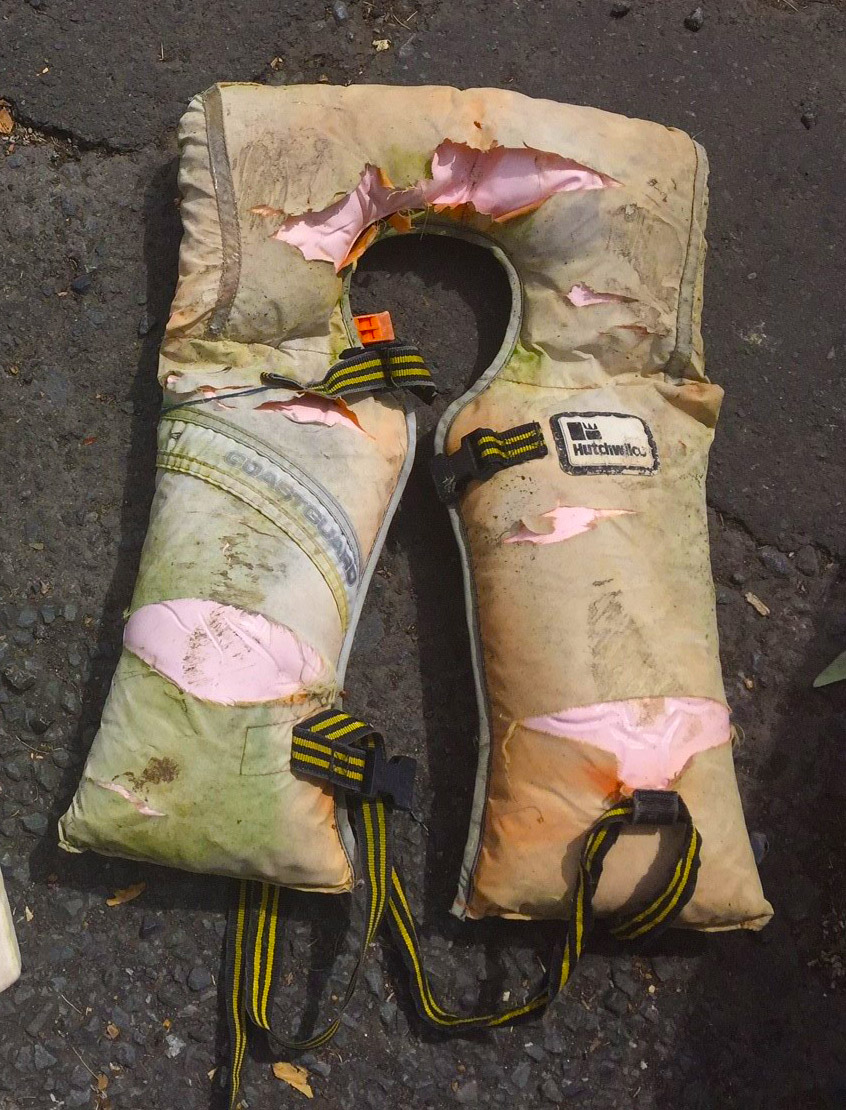
If your lifejacket looks like this waterlogged old kapok one, you need to replace it!
Inflatable lifejackets
Comfortable and lightweight, inflatable lifejackets are becoming the gold standard for safety on the water. They do need more maintenance, so here's a few things to look out for.
Download our handy guide to checking over your lifejacket (PDF, 1MB)
Pre-wear check
- Know where everything is. Did you know your lifejacket has a whistle, an oral inflation tube and reflective patches? Take the time to check your inflatable lifejacket and find where everything is, so you know if you ever need to inflate it.
- Check the CO2 cylinder. Unscrew it from it's housing and check the cylinder hasn't been used - if it's been pierced, it's empty and needs replacing. Check there's no corrosion.
- Check the safety indicators. Each inflatable lifejacket is different, but most have at least one red/green indicator to let you know the lifejackets ready to go.
- Check you can access the inflation pullcord easily and that it hasn't been tucked back into the jacket.
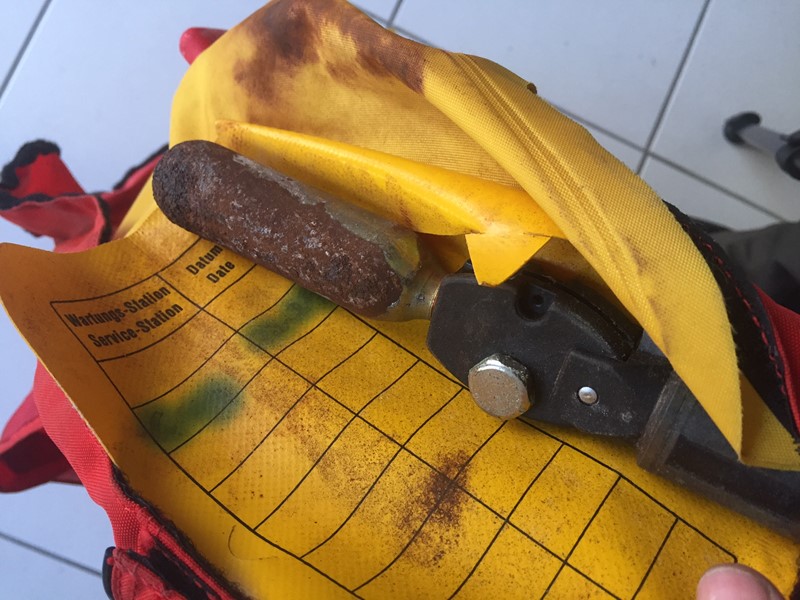
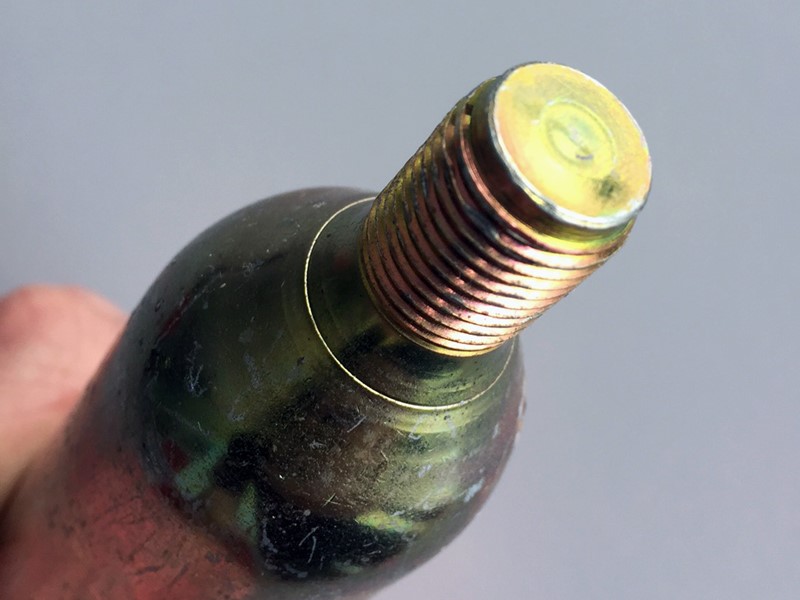
Annual check
- Check for tears and sun damage.
- Check the webbing and buckles.
- Manually inflate the lifejacket using the oral inflation tube, and leave it overnight to ensure it holds air. If it deflates, take it in for a service or get a new lifejacket.
- Corrosion on the CO2 cylinder. Corrosion like this can mean that the CO2 cylinder no longer holds gas, or that the firing mechanism is also seized. Bad corrosion can also wear a hole in the lifejacket bladder, meaning even if it does fire it won't stay inflated.
- Pack the lifejacket away correctly. Once you've deflated it, fold (rather than stuff or roll) the bladder back up into its cover.
Remember to wear your lifejackets every time you head out boating!
Boatie's Best Mate.
Get a Coastguard membership today for peace of mind when you’re out boating.


